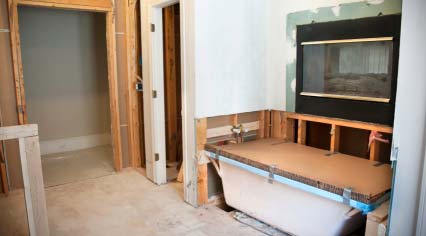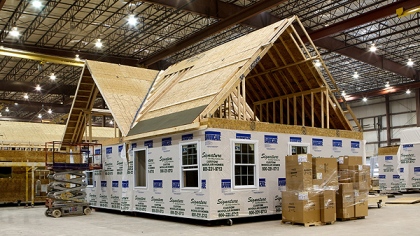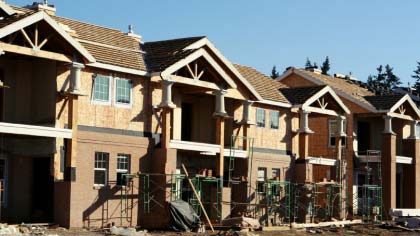Construction Loan Center
Go Local for Eco-Friendly Construction Financing

Securing a construction loan can be tricky.
Since the property in question doesn’t exist yet, there’s no collateral for lenders to claim in the event something goes wrong. Banks are (understandably) none too keen on financing a project that might not come to fruition—a project that stands to leave them in the red when all is said and done.
Think traditional homebuilders have it bad? When it comes to construction financing, eco-friendly homebuilders have an even rougher go of it.
Lenders that approve construction loans usually maintain strict sets of requirements about building materials. Anything "nontraditional" —like hemp concrete, straw bales, and earth berm—tends to be dismissed out of hand, making it almost impossible for eco-conscious homebuilders to secure financing.
Where is a green homebuilder to turn when they’ve exhausted all of their lending options? The answer may surprise you.
Portfolio lenders like local credit unions are much more open to risk than their counterparts. As a result, they are much more likely to take on unconventional financing projects—like that “nontraditional” earth berm home.
Portfolio lenders hang on to their loans, rather than selling them to other lenders on a secondary market (standard practice for conventional, big-box loan providers). These portfolio lenders accumulate earnings through interest on their loans, and through origination fees at the beginning of the loan process.
Without the strict requirements of these secondary market buyers dictating which construction projects can and cannot be approved, portfolio lenders have more latitude to finance “nontraditional” homes.
There are a host of other benefits for borrowers as well, including:
- A shorter application turnaround time
- Lower credit requirements for applicants
- No property condition stipulations
- Lower down payment requirements
- A higher limit for loan requests
All of this to say: if you’re interested in sustainable methods of construction for your home, but are unable to finance the project on your own, it’s worth acquainting yourself with the loan opportunities available through portfolio lenders—whether they’re credit unions or local savings and loan institutions.
Every construction loan will ultimately require a traditional mortgage once construction is completed, but borrowing from a portfolio lender will put you well on your way toward building the home of your dreams.
With any luck, that “nontraditional” fantasy home of yours may soon be a reality.
Luke Hodges is a writer and outreach specialist for Mortgages.com.






